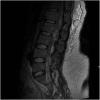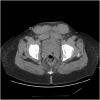Acquired factor VIII deficiency in a nulliparous patient undergoing induction of labor
- PMID: 40321343
- PMCID: PMC12048139
- DOI: 10.1515/crpm-2023-0004
Acquired factor VIII deficiency in a nulliparous patient undergoing induction of labor
Abstract
Objectives: To present a case of acquired factor VIII deficiency in the setting of labor and describe the challenges of its diagnosis and treatment.
Case presentation: A 31-year-old woman was diagnosed with acquired factor VIII deficiency while undergoing induction of labor. Her labor and post operative course were complicated by epidural hematoma formation, prolonged postoperative surgical site bleeding, and subcutaneous hematoma. Management included blood products, human Factor VII, rituximab, and a steroid taper.
Conclusions: Acquired factor VIII deficiency can be challenging to diagnose and should be considered in the differential diagnosis in patients with prolonged bleeding accompanied by a prolonged activated partial thromboplastin time (aPTT).
Keywords: acquired hemophilia A; epidural hematoma; perinatal medicine; subcutaneous hematoma.
© 2024 the author(s), published by De Gruyter, Berlin/Boston.
Conflict of interest statement
Competing interests: The authors state no conflict of interest.
Figures



References
LinkOut - more resources
Full Text Sources
